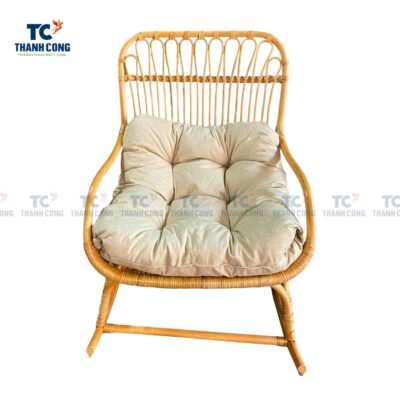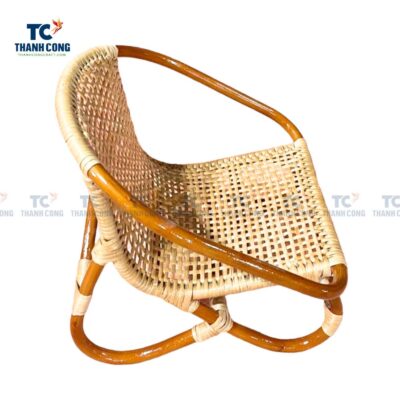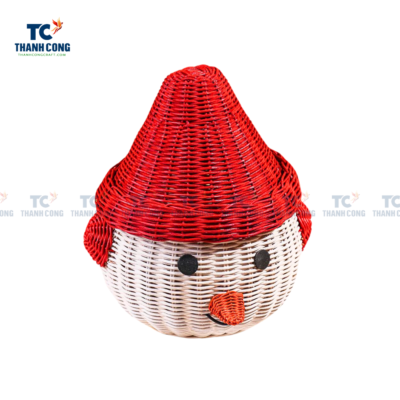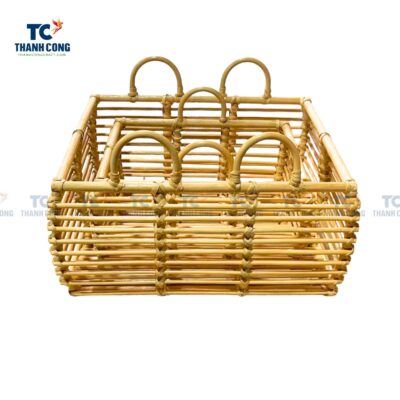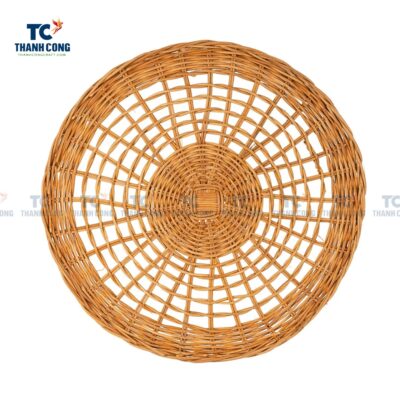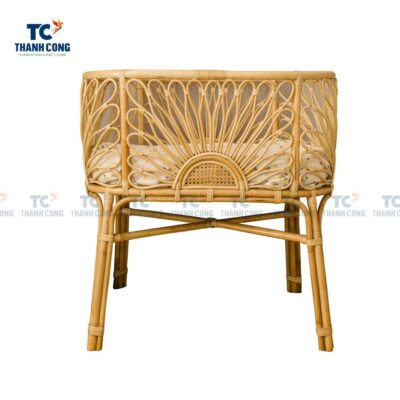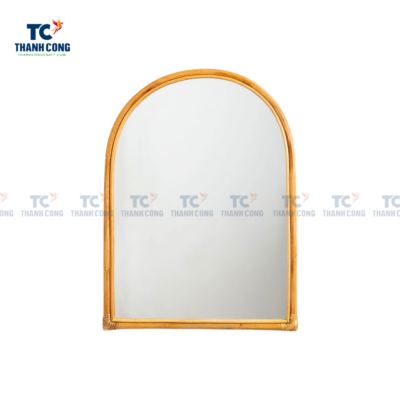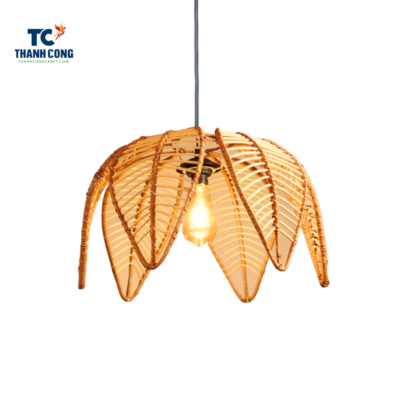If you are contemplating the purchase of garden furniture crafted from natura rattan or poly rattan, it’s essential to grasp the distinctions between these two materials. Here’s some helpful guidance to assist you in understanding PE Rattan vs Natural Rattan. So, what is the difference between rattan and PE rattan? Let’s find out right away!
1. What is PE rattan?
PE rattan, also known as polyethylene rattan, plastic rattan, synthetic rattan, faux rattan, or artificial rattan, is a man-made material mainly used in outdoor furniture, such as outdoor loungers, benches, sofa sets, dining sets, etc.
On the market of outdoor furniture material, PE rattan is also called PE wicker. Actually, rattan and wicker are used interchangeably by most people as they think rattan and wicker are the same thing. However, they are not. Rattan stands for the material that is used for weaving furniture, while wicker refers to a weaving style or a weaving method.
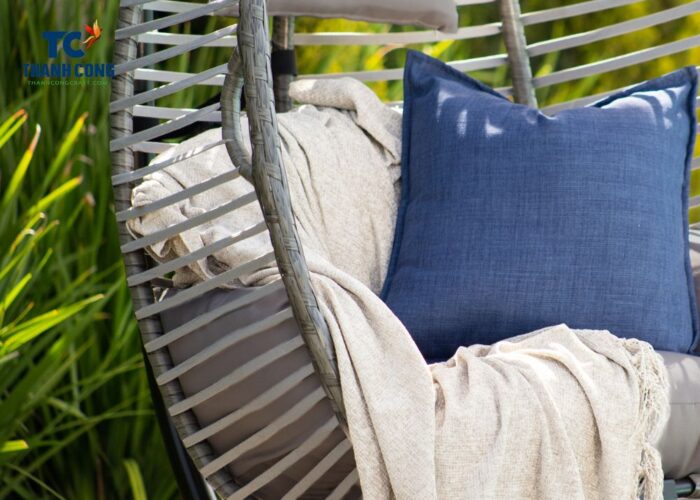
1.1 Benefits of PE rattan
- Durability: PE Rattan is highly durable and resistant to various weather conditions, including rain, UV rays, and extreme temperatures. This makes it ideal for outdoor use, as it does not rot, fade, or crack easily.
- Low Maintenance: Unlike natural rattan, which requires regular treatment and care to prevent damage, PE Rattan is virtually maintenance-free. It can be easily cleaned with soap and water, and it does not need any special treatments to preserve its appearance.
- Affordability: PE Rattan is generally more affordable than natural rattan due to its synthetic nature. This allows consumers to enjoy the aesthetic appeal of rattan without the higher cost associated with natural materials.
- Variety of Styles: PE Rattan is available in a wide range of colors, textures, and styles, allowing for greater customization and design flexibility in furniture and decor.
1.2 Drawbacks of PE rattan
- Less Authentic Look and Feel: Although PE Rattan closely resembles natural rattan, it may lack the authentic look and feel that some people prefer. The synthetic material might appear more artificial upon closer inspection.
- Environmental Impact: While there are eco-friendly options, PE Rattan is still a plastic-based material, which means its production and disposal can contribute to environmental pollution if not managed properly.
- Heat Sensitivity: PE Rattan can become quite hot when exposed to direct sunlight for extended periods, making it uncomfortable to sit on without cushions.
- Potential for Chemical Off-Gassing: As a synthetic material, PE Rattan may emit volatile organic compounds (VOCs) during its production or when exposed to high temperatures, which can be a concern for indoor air quality.
2. What is rattan?
Natural rattan is undeniably one of the most favored materials in contemporary furniture production worldwide. This versatile material lends itself exceptionally well to crafting an array of captivating and varied furniture pieces for homes.
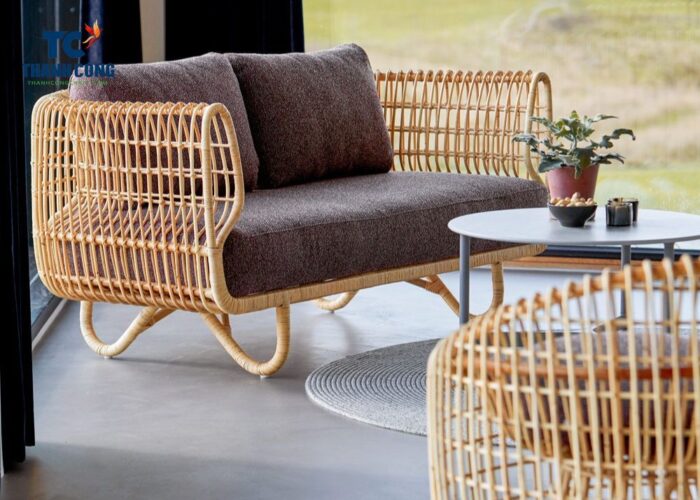
Rattan, originating from long vines that thrive in tropical climates, exhibits remarkable flexibility when heated, allowing artisans to shape it into furniture using traditional wicker techniques. Once cooled, it regains a robust, rigid state, rendering it an excellent choice for sustainable, long-lasting furniture.
Additionally, natural rattan boasts remarkable strength and durability, capable of withstanding even the harshest weather conditions. Concerns about splintering, often associated with other types of timber used in furniture, are alleviated with rattan, further solidifying its superiority in furniture construction
3. Comparison: PE rattan vs rattan
When comparing pe rattan vs natural rattan, the biggest difference is that PE rattan, also known as synthetic rattan, is made from polyethylene, a plastic material. Natural rattan, on the other hand, is obtained from the rattan tree, a vine-like plant found in tropical regions.
3.1 Regarding production materials
Furniture made from natural rattan is handwoven from 100% natural rattan vines found in the Vietnamese countryside. After a careful selection process, only high-quality rattan vines with a lifespan of 10-12 years, lengths of approximately 5 meters, smooth and beautiful surfaces, substantial thickness, hardness, and uniformity are chosen. Skilled artisans then use these rattan vines to create exquisite and unique pieces of rattan furniture.
PE rattan, also known as synthetic rattan or resin wicker furniture, is made of synthetic polyethylene (PE) material. It offers a wide range of colors and designs, and production processes can create synthetic strands that closely resemble natural rattan.
3.2 Regarding quality
Natural rattan furniture undergoes meticulous and stringent production and finishing processes to meet high standards of color and durability before being introduced to the market. These processes ensure that the furniture maintains its color and durability over time, with a potential lifespan of several decades. Natural rattan is particularly resilient and can withstand exposure to harsh weather conditions.
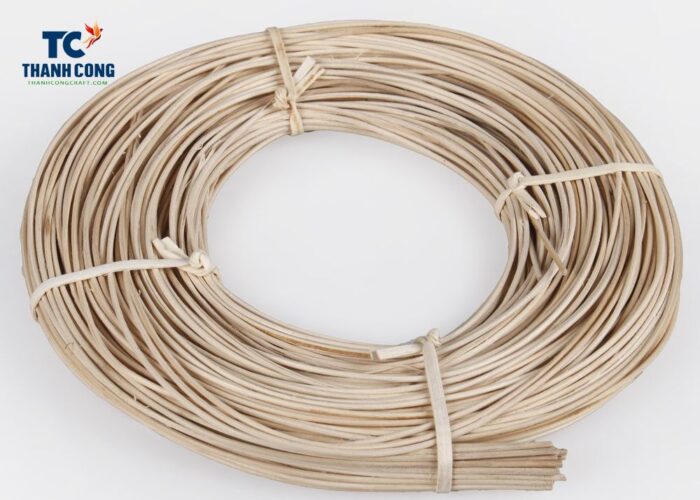
Synthetic rattan furniture, while resistant to water, can become stiff and even melt in prolonged direct sunlight, making it less durable under extreme weather conditions. The lifespan of synthetic rattan products is generally shorter than that of natural rattan.
3.3 Regarding benefits
Natural rattan furniture, woven from rattan vines, brings a refreshing and airy atmosphere to your living space. As an environmentally friendly, “green” material, it is safe for human health. When you sit on rattan chairs, swings, or beds, you can experience the tranquil ambiance of Vietnamese countryside living. It adds an elegant and sophisticated touch to your living space, allowing you to feel connected to nature.
Synthetic rattan, being made from plastic, can become uncomfortably hot to sit on during both winter and summer seasons. Additionally, plastic-based products contribute to environmental pollution and do not decompose easily in nature.
3.4 Regarding cost
Rattan is a fast-growing, easily cultivated plant, making natural rattan furniture reasonably priced compared to wood furniture. It offers good value for money, combining quality with affordability.
Synthetic rattan products are generally more affordable than natural rattan due to the lower production costs associated with synthetic materials.
Which is better rattan or poly rattan?The choice between natural rattan and synthetic rattan (PE rattan) furniture depends on factors like your preferences for material, quality, benefits, and budget. Each has its own unique characteristics and advantages to consider when selecting the right furniture for your needs.
4. FAQs
4.1 Is PE rattan good quality?
PE rattan is the highest quality rattan and is incredibly long-lasting. Many sets using PE rattan often have a guarantee from between 5-7 years which proves just how durable this furniture is. Plus, if you look after your furniture you may be able to make your set last even longer than this. PE rattan is famed for its weatherproof qualities and is very resistant to rain, snow, frost and UV rays.
4.2 Which is better rattan or poly rattan?
The primary distinction between rattan and poly rattan lies in the material they are composed of. Rattan is a natural material, whereas poly rattan is synthetic. Consequently, rattan furniture tends to come at a higher price point compared to poly rattan furniture, but it may also offer greater durability and longevity.
When making a choice between rattan and poly rattan furniture, take into account your budget, the aesthetics of your outdoor area, and your personal preferences. Each material possesses its distinct characteristics and can be employed to craft attractive and practical outdoor furniture.”
4.3 Should you put rattan furniture away in winter?
The polyethylene used in lower-quality furniture is not weather-resistant, making it susceptible to splitting after exposure to frost. To safeguard your furniture from these elements, it’s advisable to store it indoors in a garage or storage room. In contrast, higher-quality rattan can be left outdoors without issues. This is because the weave is thoroughly dyed, and the frame is made of aluminum.
4.4 Can pe rattan be left outside?
Unlike natural rattan, PE rattan material is exceptionally resilient against various outdoor elements, including rain, snow, UV light, heat, and moisture. Consequently, PE rattan furniture can be safely left outdoors year-round without concerns, making it an excellent substitute for natural rattan and one of the most sought-after materials for outdoor furniture.
In the world of furniture, the choice between PE Rattan and Natural Rattan is a pivotal decision, one that can greatly influence the longevity, style, and practicality of your outdoor or indoor furnishings. These two materials, each with its unique characteristics, offer distinct advantages and considerations.
If you have a shopping need, don’t hesitate to get in touch with thanhcongcraft via email info@thanhcongcraft.com or WhatsApp: +84967485411. Hope to serve you soon!
Check out our Natural Rattan Products:


